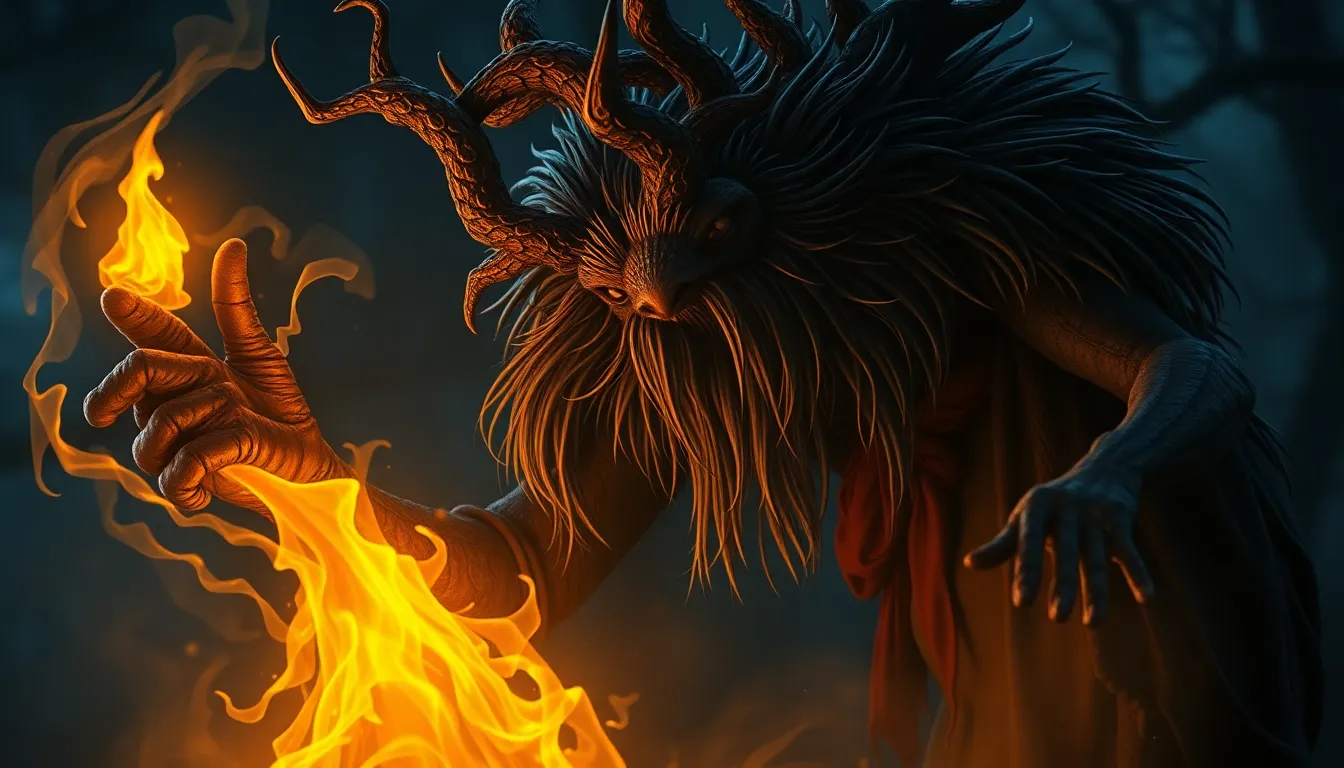Indonesian Mythology: A Tapestry of Betrayal and Revenge
Indonesian mythology is a rich and diverse tapestry interwoven with tales of betrayal and revenge. These stories, passed down through generations, offer insights into the values, beliefs, and social structures of ancient Indonesian society. The themes of betrayal and revenge are not just plot devices; they represent fundamental human emotions that resonate across cultures and time.
The Origins of Betrayal and Revenge in Indonesian Mythology
The roots of betrayal and revenge in Indonesian mythology often lie in the actions of the "Dewata" (deities). These divine beings, representing the forces of nature and human emotions, are often depicted as flawed and capable of both great generosity and terrible cruelty. Their actions, driven by pride, envy, or jealousy, set in motion chains of events that lead to betrayal and revenge.
For instance, the myth of "Batara Kala" describes the story of a powerful demon who, driven by envy and betrayal, attempted to usurp the throne of the gods. This betrayal, stemming from the demon's desire for power, sparked a war between the gods and demons. Betrayal is also often depicted as a consequence of human weakness, such as greed, lust, or a thirst for revenge.
The Role of the “Dewata” (Deities) in Tales of Betrayal and Revenge
The “Dewata” (deities) in Indonesian mythology play a complex role in the tales of betrayal and revenge. Although they are often portrayed as benevolent figures, they are also capable of immense cruelty and deception. Their actions, driven by their own desires or the need to maintain balance in the universe, often set in motion the events that lead to betrayal and revenge.
The “Dewata” (deities) are not always the perpetrators of betrayal; they can also be victims, leading to even more intricate cycles of revenge. The myth of “Ratu Kidul” (the Queen of the Southern Sea), tells the story of a beautiful princess who was betrayed and cast out by her own family. In her anger and grief, she became a powerful deity, seeking revenge on those who had wronged her.
The Power of the “Dewa” (Gods) and the Consequences of Betrayal
The “Dewa” (gods) in Indonesian mythology possess immense power and influence. Their blessings can bring prosperity, while their curses can lead to ruin. This power is often used to punish acts of betrayal and reward acts of loyalty. The consequences of betrayal can be devastating, ranging from social ostracism to divine retribution.
The myth of “Sang Hyang Tunggal”, the supreme god, demonstrates the severity of the consequences of betrayal. In this myth, betrayal is the primary source of chaos and evil in the universe. The god's anger is unleashed upon those who betray their oaths, resulting in suffering and hardship for generations to come.
The “Ratu” (Queens) and their Role in Tales of Revenge
The “Ratu” (Queens) in Indonesian mythology are often depicted as powerful figures, capable of great wisdom, strength, and cunning. Their stories showcase the consequences of betrayal and the enduring power of revenge.
The myth of “Ratu Shima”, the Queen of the East, is a classic example of a woman driven by vengeance. Betrayed by her husband, she seeks retribution and ultimately becomes a fierce and formidable ruler. The “Ratu” (Queens) in Indonesian mythology remind us that even the most powerful figures can be vulnerable to the pain of betrayal and the desire for revenge.
The “Putri” (Princesses) and their Stories of Betrayal and Revenge
The “Putri” (princesses) in Indonesian mythology often find themselves caught in the crosshairs of betrayal and revenge. They are not just passive victims; they often become active agents in the pursuit of justice, embodying strength and resilience in the face of adversity. Their stories, passed down through generations, speak to the enduring power of female agency and the complexities of human relationships.
The myth of “Putri Malu”, the shy princess, tells the story of a princess who is betrayed by her own family. She is forced to flee into the wilderness, where she is aided by supernatural beings. Driven by a desire for revenge, she eventually uses her cunning and wit to reclaim her rightful place and avenge the wrongs done to her. Her story is a reminder that even the most vulnerable individuals can rise to face their challenges and overcome betrayal.
The Motifs of Betrayal and Revenge in Popular Indonesian Myths
Betrayal and revenge are recurring themes in many popular Indonesian myths. These motifs offer valuable insights into the cultural values and anxieties of the societies that created them. The stories often depict these themes through a complex interplay of human emotions, divine intervention, and supernatural forces.
One of the most common motifs is the betrayal of trust. These stories often involve characters who break oaths, abuse power, or betray the bonds of family and friendship. The consequences of such betrayal are often severe, leading to cycles of revenge that can span generations. Another recurring motif is the use of magic and sorcery to seek revenge. These stories feature characters who use supernatural abilities to punish their enemies, highlighting the belief in the power of the unseen world to intervene in human affairs.
The Relationship Between Betrayal and Revenge in Indonesian Mythology
Betrayal and revenge are often intertwined in Indonesian mythology, forming a complex and often tragic cycle. Betrayal is often seen as a catalyst for revenge, driving characters to seek retribution for the wrongs they have suffered. The pursuit of revenge, however, is not always clear-cut. It can be driven by righteous anger, but also by a thirst for vengeance, which can lead to more suffering and injustice.
In many myths, revenge is not simply a matter of personal retribution. It is often seen as a necessary act to restore balance and justice in the world. The gods and goddesses, who are often the ultimate arbiters of right and wrong, are often depicted as intervening in human affairs to punish betrayal and reward those who seek to uphold justice.
The Impact of Betrayal and Revenge on the Social Fabric in Indonesian Mythology
Betrayal and revenge can have profound impacts on the social fabric in Indonesian mythology. The breakdown of trust and the pursuit of vengeance can lead to chaos, violence, and the destruction of communities. These stories often serve as cautionary tales, reminding people of the importance of maintaining harmony and respecting the bonds of community.
The myth of “Sang Hyang Tunggal”, the supreme god, illustrates the destructive potential of betrayal. In this myth, betrayal is the root cause of the suffering and hardship in the world. The god's anger at betrayal leads to the creation of monsters and demons, which plague humanity with disease and misfortune. The importance of loyalty and forgiveness is emphasized in many myths, as a means of preventing the spread of violence and hatred.
Theories on the Origin and Function of Betrayal and Revenge in Indonesian Mythology
There are various theories about the origin and function of betrayal and revenge in Indonesian mythology. Some scholars believe that these themes originated from the social and political realities of ancient Indonesian society, where betrayal was a common occurrence and revenge was often sought to maintain order and justice.
Others believe that these themes reflect the underlying anxieties of ancient Indonesians about the fragility of human relationships and the potential for chaos and violence. The myths, in this view, serve as a means of processing these anxieties and providing a framework for understanding human behavior. Whatever their origin, the themes of betrayal and revenge in Indonesian mythology continue to resonate with audiences today, offering timeless insights into the complexities of human nature and the consequences of our choices.
FAQ
Q1: What are some common examples of betrayal in Indonesian Mythology?
- The Betrayal of Batara Kala: Driven by envy, Batara Kala betrayed the gods and attempted to claim their power.
- The Betrayal of Ratu Kidul: The Queen of the Southern Sea was betrayed and cast out by her family, leading to her transformation into a vengeful deity.
- The Betrayal of Putri Malu: A princess betrayed by her own family, she sought refuge in the wilderness and eventually sought revenge.
Q2: How is revenge often portrayed in Indonesian mythology?
- Divine Retribution: Gods and goddesses often intervene to punish those who commit acts of betrayal.
- Supernatural Abilities: Magic and sorcery are often used to seek revenge, highlighting the belief in the power of the unseen world.
- Cunning and Wit: Characters often use their intelligence and cunning to outsmart their enemies and seek revenge.
Q3: What are the main messages surrounding betrayal and revenge in Indonesian mythology?
- Importance of Trust: The stories emphasize the importance of trust and the consequences of breaking oaths and agreements.
- Consequences of Betrayal: Betrayal often leads to chaos, violence, and the destruction of communities.
- Value of Forgiveness: Despite the allure of revenge, many stories highlight the importance of forgiveness as a means of restoring harmony and preventing further suffering.




